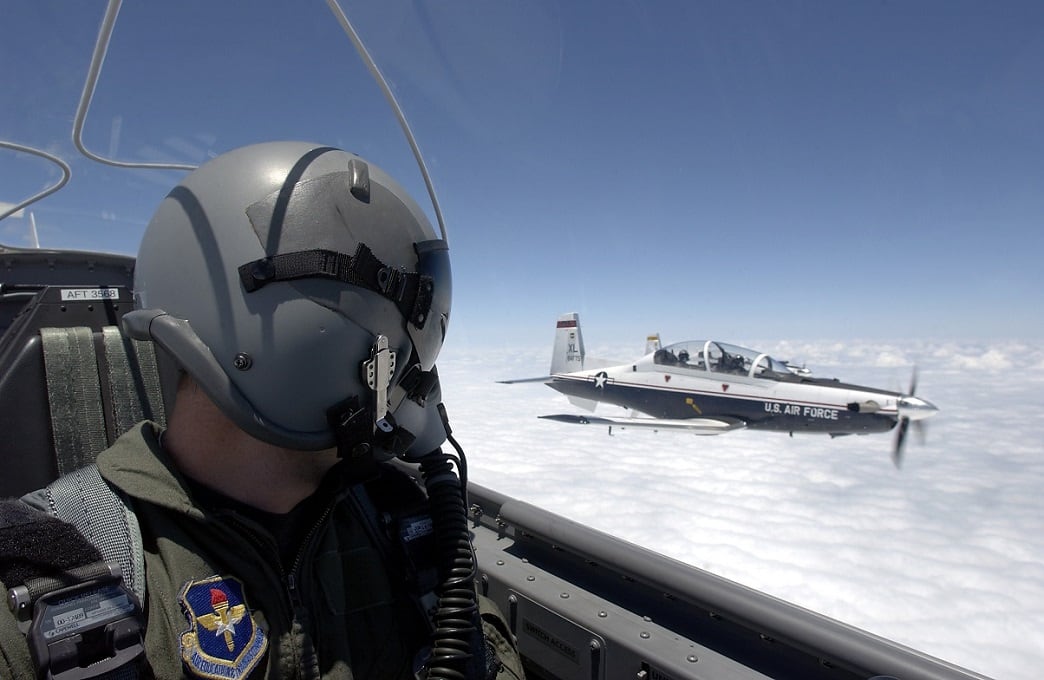A T-6 Texan II trainer that crashed near Joint Base San Antonio-Randolph in Texas in September experienced engine failure caused by an improperly installed fuel transfer tube locking plate, according to an accident investigation board report.
The investigation, released on Wednesday, found that because the plate was not installed correctly, the tubes that transfer fuel between the engine’s 14 fuel injection nozzles shifted out of position during the Sept. 18, 2018, training flight. This meant that, although fuel flow to the engine had increased, the amount of fuel actually reaching the engine wasn’t enough.
The engine failed as the T-6 attempted a landing approach at the base. The instructor pilot and the student ejected, landing in a small grove of trees nearby and sustaining minor injuries in the process. The aircraft crashed about 4.8 miles northwest of the base and was completely destroyed, at a loss of $5.7 million.
The pilots were conducting an instructor qualification sortie for the Air Force’s pilot instructor training course, the report said. The pilots and the plane were assigned to the 559th Flying Training Squadron at Randolph’s 12th Flying Training Wing.
RELATED

The engine that failed had been maintained by Standard Aero Ltd. in December 2017 as part of a standard 4,500-hour major overhaul, the report said. At that time, its fuel manifold set and fuel flow divider unit were removed, overhauled separately and then reinstalled. But in the process, the locking plate was not installed according to the manual’s requirements, the report said.
That engine, with its improperly installed locking plate, was then stored until August 2018, when it was installed in the T-6 to replace an unserviceable engine.
The Texan II showed no problems for several weeks, and flew 17 sorties between Aug. 30 and Sept. 17. The pilots also did not notice any problems before taking off on Sept. 18.
But about 52 minutes into the flight, as the T-6 was vectoring for an approach to land back at Randolph, the student noticed a quick, short torque increase. The report said the data showed this torque surge happened at the same time that the fuel transfer tubes displaced, and the fuel flow increased. The student pilot mentioned the increase in fuel flow to the instructor pilot, but didn’t mention the torque surge.
The pilots decided to stop the plane after landing, instead of taking back off again to continue practicing. The instructor pilot took over to slow the plane down and get ready for approach and landing. But as he did so, the engine failed and was no longer able to produce the necessary thrust. The plane was flying too slow and low to glide in, so the pilots decided to eject, and turned the plane toward a field and away from a school.
Stephen Losey is the air warfare reporter for Defense News. He previously covered leadership and personnel issues at Air Force Times, and the Pentagon, special operations and air warfare at Military.com. He has traveled to the Middle East to cover U.S. Air Force operations.





